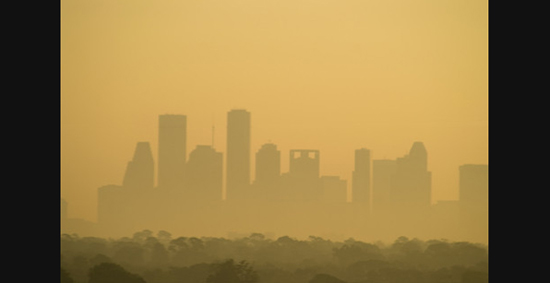Oct. 3, 2015
By Sara Sneath
Victoria Advocate
The Environmental Protection Agency has identified Coleto Creek and 11 other coal-fired power plants in the state as high sulfur dioxide emitters.
Under the Clean Air Act, the EPA is required to set air quality standards for sulfur dioxide, which can cause respiratory illnesses, harm the environment and damage property.
In 2010, the agency revised its national air quality standard for the pollutant. Now, the agency is collecting monitoring data from 12 coal-fired power plants in the state that the agency found emit large amounts of sulfur dioxide.
The data will be used to determine if the areas where the plants are located meet the new air quality standard, Joe Hubbard, agency spokesman, wrote in an email last week.
If the area around Coleto Creek Power Plant is found to have levels of sulfur dioxide that make it unhealthy to breathe, the agency would designate the area as nonattainment, and the plant would likely be required to take costly measures to cut down on its emissions.
The designation could be detrimental to taxpayers and workers in Goliad County, where the plant is located, said Goliad County Judge Pat Calhoun. The power plant provides about 43 percent of the tax base in the county.
"I’m concerned that the EPA, as proven by the fact that it was already slapped down at the Supreme Court level over the Waters of the U.S., is overreaching it’s authority," he said. "I’m concerned they will go in and cherry pick data to achieve a preconceived outcome. This administration has proven that it’s against fossil fuel." The company projects that installing sulfur dioxide scrubbers or converting the plant to natural gas could cost more than $100 million, wrote Julie Vitek, a company spokeswoman, in an email.
"Clearly, the options for compliance depend on the determination of the EPA as to whether Goliad County is an attainment zone or not," she wrote. "Our data shows the county more than meets the EPA standard, and that’s why we are eagerly awaiting the agency’s determination."
But nearby neighbors say they’re already paying the price of sulfur dioxide emissions. Charlie Faupel, who owns a ranch near the plant, said sulfur dioxide has damaged hundreds of trees on his property.
"They’ve been doing this more than 30 years. I’ve lost hundreds of trees, and my neighbors have lost thousands," he said. "A few of the trash trees went first. Nobody cares much about a hackberry and they started dying. Then, white oaks and pecans." The harmful effects sulfur dioxide can cause to trees has been documented, said Neil Carman, who formerly worked for the state environmental agency and now heads the Texas chapter of the Sierra Club’s clean air program.
Carman studied pecan crop losses around a coal-fired power plant in Fayette County. In a 2010 report, Carman noted that Fayette-area pecan growers suffered devastating crop losses and economic harm as a result of the Fayette plant’s era of burning coal without using sulfur dioxide scrubbers.
The Coleto Creek plant could be hurting trees, Calhoun said. But forcing the plant to switch to a renewable energy source or install scrubbers isn’t within the county’s authority. And, if the plant determined that it was no longer economically feasible to operate in Goliad County, the county would be forced to cut some services or double the tax rate.
"I’m trying to look out for the citizens of Goliad County," Calhoun said. "It’s just proven that this administration doesn’t like coal, and it’s going to do what it can to do away with it."
Read letter to Judge Calhoun from the EPA.
Top emissions
These are the Texas electric power plant sources exceeding the emissions thresholds established by court order of 16,000 tons of sulfur dioxide emitted in 2012, or 2,600 tons of sulfur dioxide emitted in 2012 with an average emission rate of at least 0.45 pounds sulfur dioxide per mmBtu:
- Monticello Steam Electric Station
- Optim Energy Twin Oaks Power Station
- Limestone Generating Station
- Luminant Sandow Yorktown Power Plant
- Coleto Creek Power Station
- San Miguel Electric
- Tolk Generating Station
- Luminant Power Plant at Martin Lake
- Big Brown Power Plant
- Harrington Generating Station
- W A Parish Electric Generating Station
- Sandy Creek Energy Station
Read more: Coleto Creek Power in legal battle over appraisal
This document contains copyrighted material whose use has not been specifically authorized by the copyright owner. SEED Coalition is making this article available in our efforts to advance understanding of ecological sustainability, human rights, economic democracy and social justice issues. We believe that this constitutes a "fair use" of the copyrighted material as provided for in section 107 of the US Copyright Law. If you wish to use this copyrighted material for purposes of your own that go beyond "fair use", you must obtain permission from the copyright owner.
